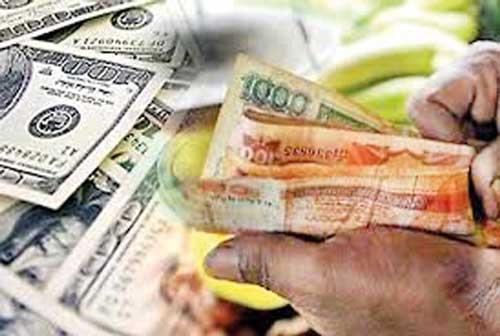24 Nov 2020 - {{hitsCtrl.values.hits}}
By Nishel Fernando
The government eyes US$ 2.4 billion potential increase in official worker remittance inflows per annum as COVID-19 pandemic disrupts the operations of informal and illegal remittance channels forcing Sri Lankan migrant workers rely solely on official channels when remitting their funds to the country. “We are now talking to banks to see whether we can get these remittances to come regularly in new numbers. As you know, we had about 30-35 percent increase in remittances, mainly because some unofficial channels were not able to function.

Therefore, all that money had to come through formal channels,” State Minister of Money & Capital Market and State Enterprise Reforms, Ajith Nivard Cabraal said. He was speaking at a post-budget analysis webinar organised by PwC last week.
The State Minister pointed out that the sudden increase in worker remittance inflows could translate into additional worker remittances of US$2.4 billion per annum, which is roughly sufficient to cover the country’s oil import bill (US$ 2.5 billion), while noting that an increase of US$ 150-200 million in worker remittance inflows was seen on a monthly basis during past few months.
Sri Lanka experienced a robust flow of worker remittances despite impacts on wages and employment of Sri Lankan migrant workers since May, as the cumulative inflows reached US$ 5.7 billion from January through October indicating a growth of 2.6 percent over the corresponding period in 2019.
In 2019, Sri Lanka received US$ 6.7 billion from worker remittances. Cabraal noted that the recent data on official remittance inflows reflects real figures on overall remittance inflows to the country.
According to the Institute of Policy Studies (IPS), informal and illegal channels of remittances restrict foreign exchange from reaching Sri Lanka.
“The informal and illegal channels of remittances operate by the remittance service provider collecting remittances in the COD (in foreign currency), and distributing the same in Sri Lanka using his/her LKR funds in Sri Lanka, often through a partner here. Such operations restrict the much needed foreign exchange from reaching Sri Lanka.
Instead, foreign exchange destined to Sri Lanka remains in the COD,” it elaborated. However, there are no reliable estimates on the share of remittances sent via informal and illegal channels. The banking channels and money transfer operator (MTO) remain most popular ways of remitting funds for Sri Lankan migrant workers.
The average cost of remitting to Sri Lanka via banking channels is estimated at 5.4 percent of the amount remitted, while it costs 3.7 percent when remitted via the MTO channels. The government in budget 2021 announced a new scheme to encourage Sri Lankan migrant workers to remit their funds via official channels, proposing Sri Lankan migrant workers to receive additional Rs.2.00 for every dollar remitted.
19 Nov 2024 13 minute ago
19 Nov 2024 14 minute ago
19 Nov 2024 26 minute ago
19 Nov 2024 1 hours ago
19 Nov 2024 2 hours ago